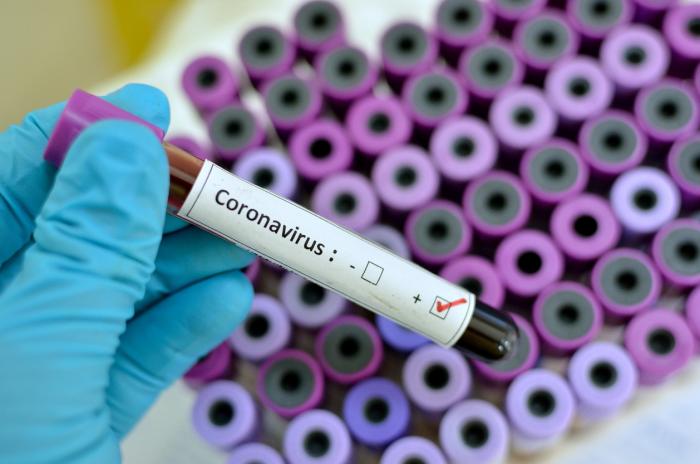Stories of the rapidly escalating responses to coronavirus (COVID-19) dominate the news cycle. There is an increasing number of cases throughout the United States, and many major events have been postponed or cancelled, such as the South by Southwest festival in Austin, Texas and the Emerald City Comic Con in Seattle, Washington. Many institutions have cancelled non-essential travel and public health officials are recommending that people with weak immune systems stay home. Purell dispensers are proliferating in public places, and there have even been modest runs on food supplies and toilet paper.
At this time, the total cost of the combined responses is assuredly in the trillions, and these costs vastly outstrip the number of deaths worldwide from the coronavirus. The New York Times is presently reporting (and constantly updating) a total of 545 confirmed cases across 34 states and DC with 22 total deaths—surely a low estimate of the total prevalence of the disease. By way of comparison, the CDC reports that this year’s U.S. flu season saw between 34 and 50 million infections, between 350 thousand and 620 thousand flu hospitalizations, and between 20 thousand and 52 thousand flu deaths. (The wide range of these estimates is due to difficulty estimating the number of flu cases that go undetected through what the CDC terms “influenza surveillance.”)
Why has there been such a dramatic mismatch in the responses to ordinary flu and the coronavirus? Medical and epidemiological experts say that the capacity of COVID-19 to spread could generate huge numbers of deaths and illnesses worldwide. It is presently estimated that COVID-19 has a global mortality rate in the ballpark of 3 percent, being roughly an order of magnitude more fatal than traditional influenza. COVID-19 may also be more contagious than the flu: Preliminary studies suggest that one infected with the coronavirus will infect somewhere between 2 and 3 others, whereas one infected with the flu will spread it, on average, only to 1.3 others. Even still, we are a long way from the Spanish flu pandemic of 1918, which resulted in perhaps 500 million infections and between 50 and 100 million deaths worldwide, including some 675,000 Americans. The level of medical and institutional sophistication today makes it exceedingly unlikely that these results will be replicated with COVID-19.
All this raises a question: What is the role of government in crises such as these?
In ordinary times, the classical liberal approach favors strong property rights and limited government. But it is less widely known that this same theory, like virtually every other general political approach, advocates strong government controls in any emergency situation that poses an immediate peril to life and health. As a classical liberal, I often begin my analysis with the Roman maxim “Salus populi suprema lex esto”—the health (or well-being) of the population is the highest good. That principle is widely understood to invoke a second maxim, which is that ordinary property rights are suspended in times of necessity, but only so long as the necessity lasts.
The notion of necessity is narrowly defined to cover only those cases where there is an imminent peril to life or property caused by natural forces such as storms, fires, floods, famine, and disease. These necessities come in two types—private and public. The former involves cases where, for example, someone stranded at sea is entitled to seek shelter on the property of others to save himself, even if he must compensate the property for any property damage he causes. But for these purposes, the key class of cases are public necessities affecting thousands or even millions. Since the earliest times, the state has had plenary power to do what must be done to protect its population from these perils.
This brute truth means that compensation for individual losses is generally denied under a doctrine of absolute privilege. The state, in other words, has the power to expropriate power from anyone and everyone without paying any compensation whatsoever. But as with private cases of necessity, this extraordinary level of government power is lost once the emergency is past. Unfortunately, these salutary principles have come under attack recently. Former Chicago Mayor Rahm Emanuel is perhaps best known for his quote “You never want a serious crisis to go to waste.” One must, he went on, seize “an opportunity to do things that you think you could not do before.” A classical liberal rejects this temptation to rethink basic policies in times of duress.
On this score, the New York Times misdelivers. Its lead editorial by Charlie Warzel, an opinion writer, is entitled “When Coronavirus Quarantine Is Class Warfare.” The major takeaway: “A pandemic offers a great way to examine American class inequities.” Sure, Warzel is right to note that the occurrence of COVID-19 has had a differential impact on various classes of society. This is partly due to the luck of the draw as to where people live, work, and vacation. There is no dispute that people who live in remote places and can earn a living online will fare better in a crisis. Warzel himself lives in Montana and works from home—and he notes that his lifestyle, which has shielded him from the virus, is a luxury. But that doesn’t mean that we should address the present crisis by looking at the peculiar circumstances of certain classes of people.
Warzel argues for a number of policy responses to the outbreak. Some of his suggestions could well make sense—for an emergency. He mentions Congress “mandating” paid leave for people who fall ill or whose services are needed at home. The risk of spreading infections, in principle, makes that proposal sensible, so that sick workers are kept out of circulation and others are cared for. Whether the initiative should be done primarily privately or by the state is tricky, but a discussion of some public subsidy to offset the massive negative externalities of contagion clearly belongs on the table. But it hardly follows, as Warzel argues, that mandated paid family leave is appropriate in ordinary times when there is no massive infection risk.
Warzel also wants people to start reimagining their lives for when the crisis passes. Maybe more people should go vegan, and or patronize local businesses, he suggests. But does he really believe that people like him, who are fortunate enough to work remotely, will change their lives in such ways? Why would we think that such changes will occur when customary business arrangements worked just fine before? We must learn to suppress our own totalitarian impulses.
Another journalist, James Traub, is also using the crisis to advance a political agenda. In his gloomy essay “Our ‘Pursuit of Happiness’ Is Killing the Planet,” he uses the tragedy of the coronavirus outbreak to launch an explicit attack on the principles of classical liberalism. He challenges John Stuart Mill’s harm principle that allows individuals to do what they will until they engage in harm to other individuals. But his argument is tenuous, for there is absolutely no connection whatsoever between the coronavirus and global warming. Traub is just wrong to use this crisis to advance a goal of net-zero carbon and the Green New Deal. And implementing his policy proposals will do nothing to mitigate the current pandemic or a similar tragedy in the future.
The coronavirus outbreak has much more to do with the nefarious activities of the Chinese government and the rapid movement of people across the globe than with some tiny perturbation in global temperature over the last few decades. It is therefore deeply irresponsible for Traub to ask: “Are we willing to sacrifice personal liberty for global survival?” A world pandemic requires immediate attention to deadly risks, not woolly proposals to reform American society that make no more sense in times of crisis than in times of peace.
















